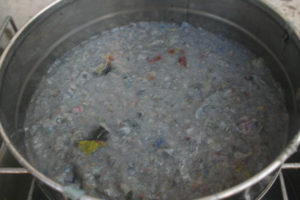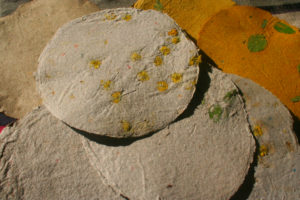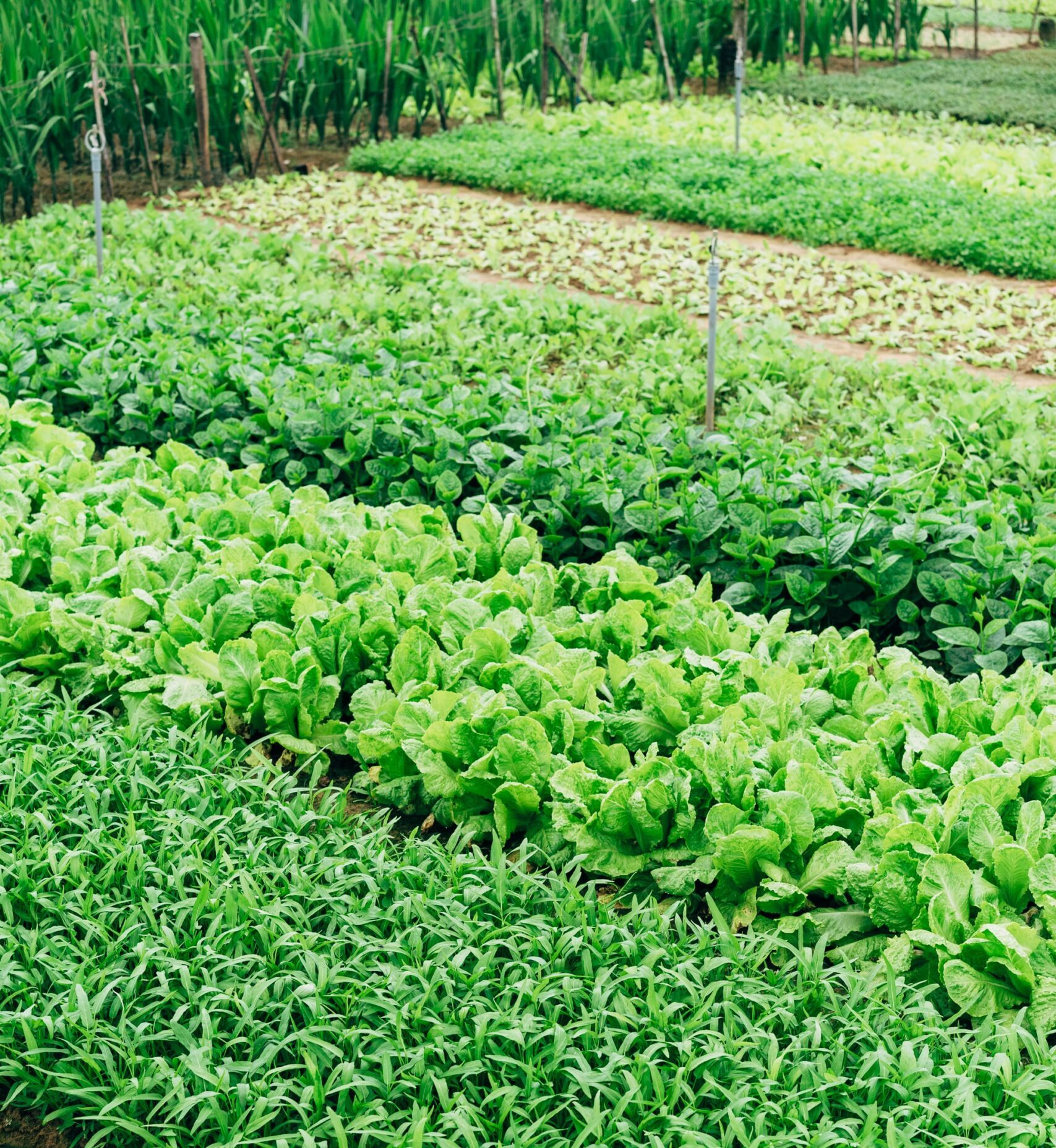We have a ton of unused newspapers sitting around, and while I re-purpose them for various things like cleaning windows, making patterns for clothing, the stack isn’t getting any smaller. So, we’ve been making paper! It’s a fairly simple process and doesn’t require any fancy equipment. This is a kid-friendly activity, which is an added bonus 🙂
All you need is:
- Two Buckets
- Scrap paper
- Blender
- Water
- A spoon
- Sieve
- Cotton cloth for soaking up excess water
- Rolling pin (optional)
- A large swath of fabric for drying the paper (if you’re using dyes, make sure it’s something you don’t mind staining!)
We’ve been adding flowers and leaves to ours for extra pizzazz. You can even dye the paper with coffee, tea, turmeric, or beet juice.
Before you get started, cut up however much scrap paper you’re willing to part with and soak in a large bucket of water for at least an hour. Newspaper absorbs water quickly, but printer paper or other hard papers may need to soak overnight.
Once your paper is waterlogged, you can begin!
First, you’ll need to fill your blender about halfway with soaked paper. Add extra water to help blend the paper. 
Once your paper is well blended it will look like a thick goopy paste. Since we used newspaper, ours turned a bluish-gray, but other types of papers may be different colors.

Now you’ll need to fill up a bucket with water. This isn’t an exact science, so feel free to experiment with the amount of water you add. Your bucket should be large enough to fit your sieve and hands.
To your water add some of the blended paper. I like to add a lot, because it is easier to work with–thin paper tears too easily. Stir the paper into the water, and then dip your sieve into the water-paper mixture. If you’re adding dyes or flowers/leaves into your paper, add these to the water now. Slowly pull the sieve straight up out of the water and allow the water to drain from the sieve. This can take a minute or two.

Now you’ll need to gently and firmly press your cloth or sponge on top of the paper fibers in your sieve. The drier you can get your paper, the more easily you’ll be able to transfer it without tearing. I used an old shirt that doesn’t fit my son anymore, but any absorbent fabric will work. I placed a metal basket on top of my bucket so the water didn’t make a mess all over the floor. Get as much water out as possible.

This is optional, but I found it works really well to drain excess water and stops it from sticking to the fabric. I found a bowl that was slightly smaller than my sieve and had a flat bottom. I placed this on top of the cloth and pressed down, trying to equalize the pressure in the center of the bowl.

After you’ve gotten as much water out as possible, remove the bowl from the top of the cloth and sieve. Now gently lift the corners of the fabric from the paper. One side may come up more easily, so start pulling up there. You can gingerly press the paper down with one hand while you pull the fabric up with another.
Here comes the tricky part! On a flat cloth, flip the sieve upside down so the paper falls on top. This may take a few tries to do correctly, but if you do mess up you can always add the paper back into your water and try again (stir well-it will get clumpy from being dried).

This is optional, but works well to make your paper extra flat. Take another cloth and place on top of your paper, being mindful not to wrinkle either the cloth or paper. Use a rolling pin to gently roll excess water out of your paper and flatten it. Don’t use a lot of pressure or your paper will tear.


After the paper has been rolled out.
Now all you need to do is sit back, relax and wait for your paper to dry. If you check on it and it seems dry enough to flip, you can gently flip it over so it dries faster. I put mine out in the sun and it took about 6-8 hours to fully dry. After they were dry I stacked them and placed a weight on top to make them more flat, but I’m not sure if it made much of a difference. You can use an iron or heat gun to speed the drying process, if you feel so inclined. You can cut the raw edges of the paper to make them look cleaner or shape the paper however you’d like. I left mine as-is, because I like how they turned out 🙂 .


Et voila! Home-made paper! You can use this paper for art projects, gifts, grocery lists, or whatever else you can think of.
Get more like this—Sign up for our daily inspirational newsletter for exclusive content!
__
Photo: Jessi Ferguson




